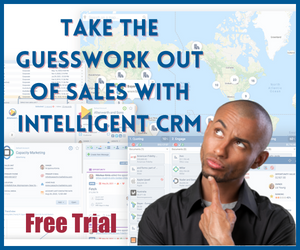Letting go of a business you’ve poured your life into is one of the most significant, most gut-wrenching decisions an entrepreneur can make. It’s the culmination of years of sleepless nights and relentless hustle. But too many founders treat the sale as an afterthought, a frantic scramble that leaves a shocking amount of money on the table. Even worse, some fail to sell at all.
So, how do you ensure your final chapter is a blockbuster success?
We dove deep into an incredible conversation between John Golden and Chris Spratling, the seasoned entrepreneur, coach, and author of the Amazon bestseller The Exit Roadmap. Chris has been in the trenches as both a seller and an advisor, and his insights are pure gold.
This isn’t just a summary; it’s your new playbook. Whether you plan to sell next year or a decade from now, these strategies will help you build a more valuable, resilient, and sellable company.
The Golden Rule: Start Planning Your Exit on Day One
Think of selling your business like staging a house. You wouldn’t wait until the day the “For Sale” sign goes up to fix the leaky roof and paint the walls, would you? The best time to start preparing for your exit is the day you open for business.
According to Chris, this “end-in-mind” thinking isn’t about being pessimistic; it’s about being strategic. When you build your company with the eventual buyer in mind, you make smarter decisions every step of the way.
Your Action Plan:
- Define Your Endgame: Are you building a legacy to pass on, a cash-flow machine, or an asset to sell? This single question should be your North Star.
- Reverse-Engineer Value: Look at what makes companies in your industry fetch premium prices and build those characteristics into your business from the ground up.
- Systematize Everything: From your sales process to how you order office supplies, document everything. A business that runs on well-oiled systems is infinitely more valuable than one that runs on your magic.
What Buyers Really Want: The 10 Drivers of a Premium Valuation
Chris Spratling breaks down business value into ten core drivers. Nailing these doesn’t just bump up your sale price; it makes buyers feel confident and reduces their perceived risk. Think of it as tuning your business’s engine for peak performance. 🚀
The Core Value Drivers:
- A History of Growth: Buyers want to see a steady, predictable climb, not a recent, inexplicable spike.
- Scalability: Is there a clear, believable path for the business to grow without you?
- Owner Independence: If you get sick for a week, it grinds the whole operation to a halt, you have a problem. The less the business depends on you, the more it’s worth.
- Diversified Revenue: Over-reliance on a few “whale” clients or a single supplier is a massive red flag for buyers. Spread your risk.
- A True Moat: What makes you unique? Strong branding, proprietary tech, or intellectual property (IP) are huge value multipliers.
- Squeaky-Clean Financials: Your books must be immaculate, transparent, and professionally managed. No exceptions.
- Transferable Systems: Can a new owner step in and follow your documented processes to get the same results?
- A Defensible Market Position: Do you have a strong foothold in your market with barriers that keep competitors at bay?
- Recurring Revenue: Predictable, subscription-based, or contractual revenue is the holy grail for buyers.
- A Believable Future: Your growth projections must be grounded in reality and backed by a solid plan.
Avoiding the Value Killers: Common Mistakes That Sabotage Your Sale
Many entrepreneurs unknowingly destroy their company’s value by making a few classic mistakes. Chris highlights these as the biggest deal-breakers:
- The “Indispensable Owner” Trap: If your business is built around your relationships and skills, what is a buyer purchasing? Build a team and delegate relentlessly.
- Key Person Risk: Having all your knowledge locked up in one superstar employee is just as dangerous. Cross-train your staff and build institutional knowledge.
- Messy Financials: Incomplete or confusing financial records scream “risk” and will send buyers running during due diligence. Invest in a great accountant from the start.
- Being a Commodity: If you can’t clearly articulate what makes you different and better, buyers won’t have a reason to pay a premium. Define and lean into your Unique Selling Proposition (USP).
Your Secret Weapon: A Bulletproof Data Room
When a serious buyer comes along, they’ll want to look under the hood. This process, called due diligence, is where deals live or die. Chris emphasizes that having a well-organized “data room” ready to go is a game-changer. This is a secure online folder containing all necessary documents: financials, client contracts, employee agreements, IP registrations, leases, and more.
Being prepared shows you’re a serious, professional operator. It builds immense trust and dramatically speeds up the sale process. Fumbling for documents or having to say “I’ll get back to you” on basic financial questions kills momentum and buyer confidence.
Crafting a Growth Story That Sells a Future
Here’s a crucial insight: Buyers don’t just pay for your past performance; they pay for your future potential.
Your job is to paint a compelling, credible picture of where the business is headed. This isn’t about creating wild, hockey-stick projections. It’s about showing a new owner the untapped opportunities they can seize.
Your Action Plan:
- Identify Clear Growth Levers: Highlight new markets, potential product lines, or operational efficiencies a buyer could implement.
- Document the Roadmap: Provide a clear, step-by-step strategy for how a new owner can achieve that future growth.
- Know Your Numbers: Be ready to defend every assumption in your financial forecasts with solid data and logic.
The Emotional Gauntlet: Are You Mentally Ready to Sell?
Selling your business is an emotional marathon, not a sprint. For many founders, their identity is completely intertwined with their company. Chris stresses that being mentally and emotionally prepared for the sale is just as crucial as being operationally ready.
Before you even think about listing your business, get crystal clear on your “why.” Why are you selling? What do you want your life to look like after the deal is done? Answering these questions honestly will help you navigate the inevitable emotional highs and lows and avoid seller’s remorse—a surprisingly common affliction.
Getting ready for a sale is a multi-year process. Chris suggests a realistic timeline:
- 1-2 Years Out: Get your house in order. Clean up your financials, systematize operations, and start building your data room.
- 9-12 Months: The active selling process—marketing the business, negotiating with buyers, and signing a deal.
- 6+ Months Post-Sale: The transition period where you help the new owner take the reins.
The key takeaway? Start early, and don’t take your foot off the gas. A dip in performance while you’re trying to sell can be a deal-killer.
Our Host
John is the Amazon bestselling author of Winning the Battle for Sales: Lessons on Closing Every Deal from the World’s Greatest Military Victories and Social Upheaval: How to Win at Social Selling. A globally acknowledged Sales & Marketing thought leader, speaker, and strategist, he has conducted over 1500 video interviews of thought leaders for Sales POP! online sales magazine & YouTube Channel and for audio podcast channels where Sales POP! is rated in the top 2% of most popular shows out of 3,320,580 podcasts globally, ranked by Listen Score. He is CSMO at Pipeliner CRM. In his spare time, John is an avid Martial Artist.







Comments